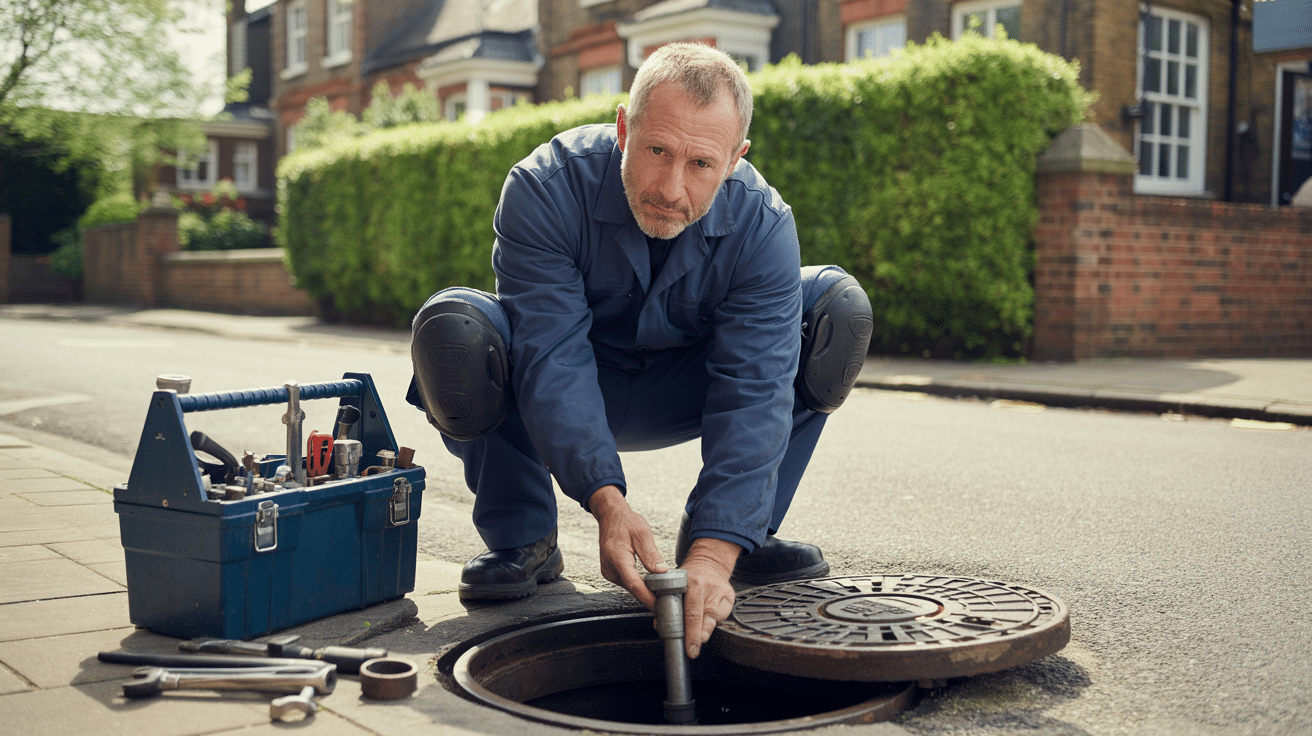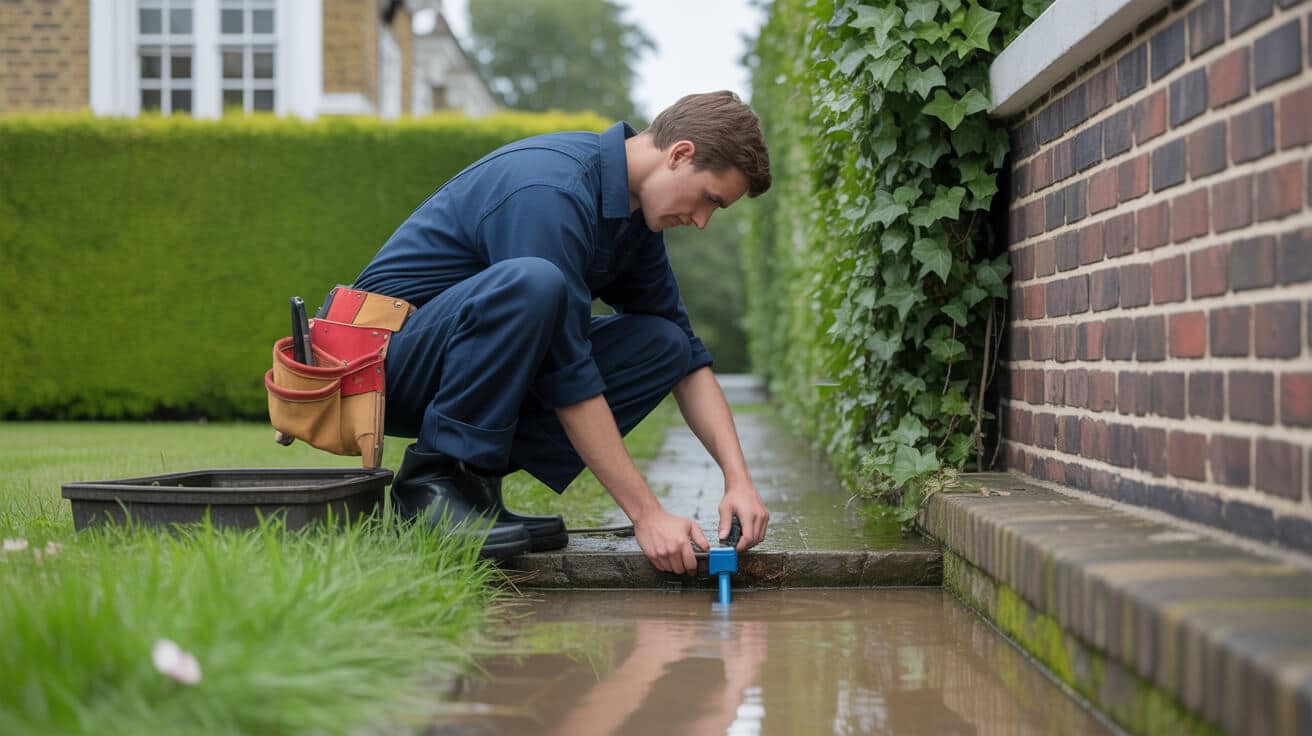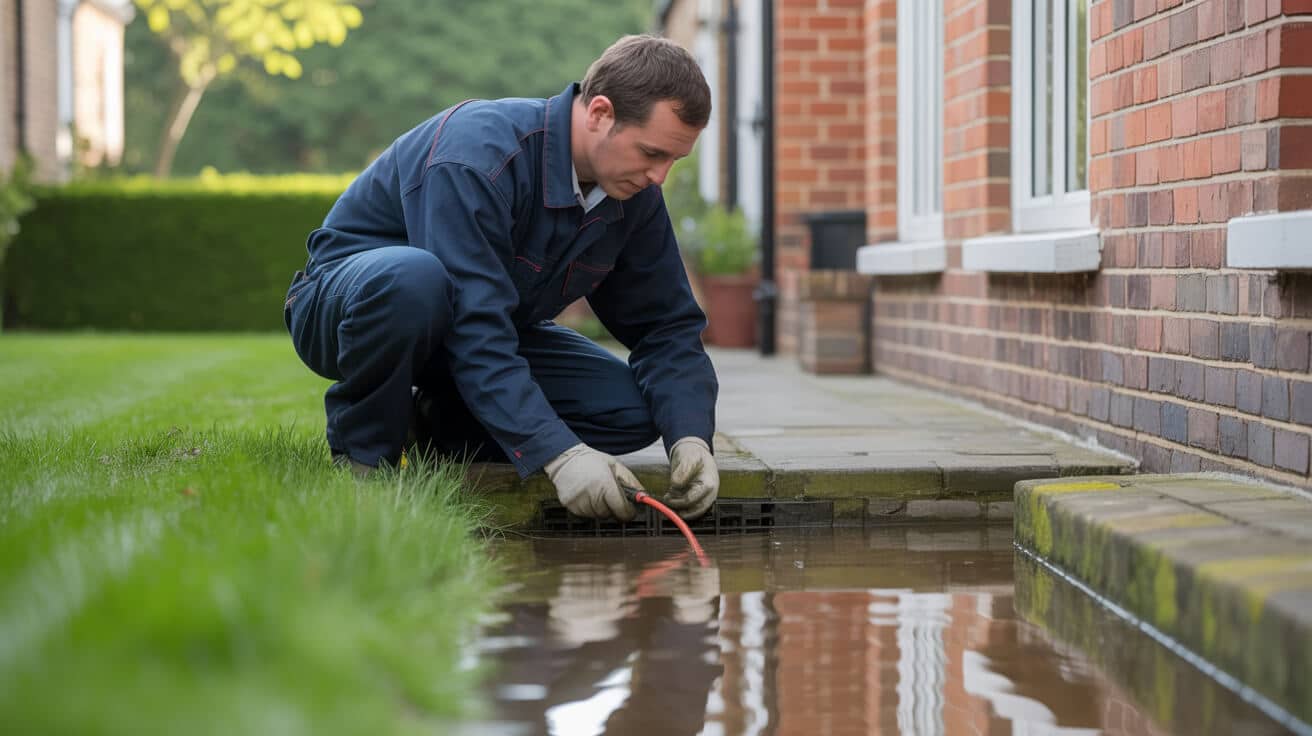 How to Prevent The Most Common Plumbing Emergencies
How to Prevent The Most Common Plumbing Emergencies
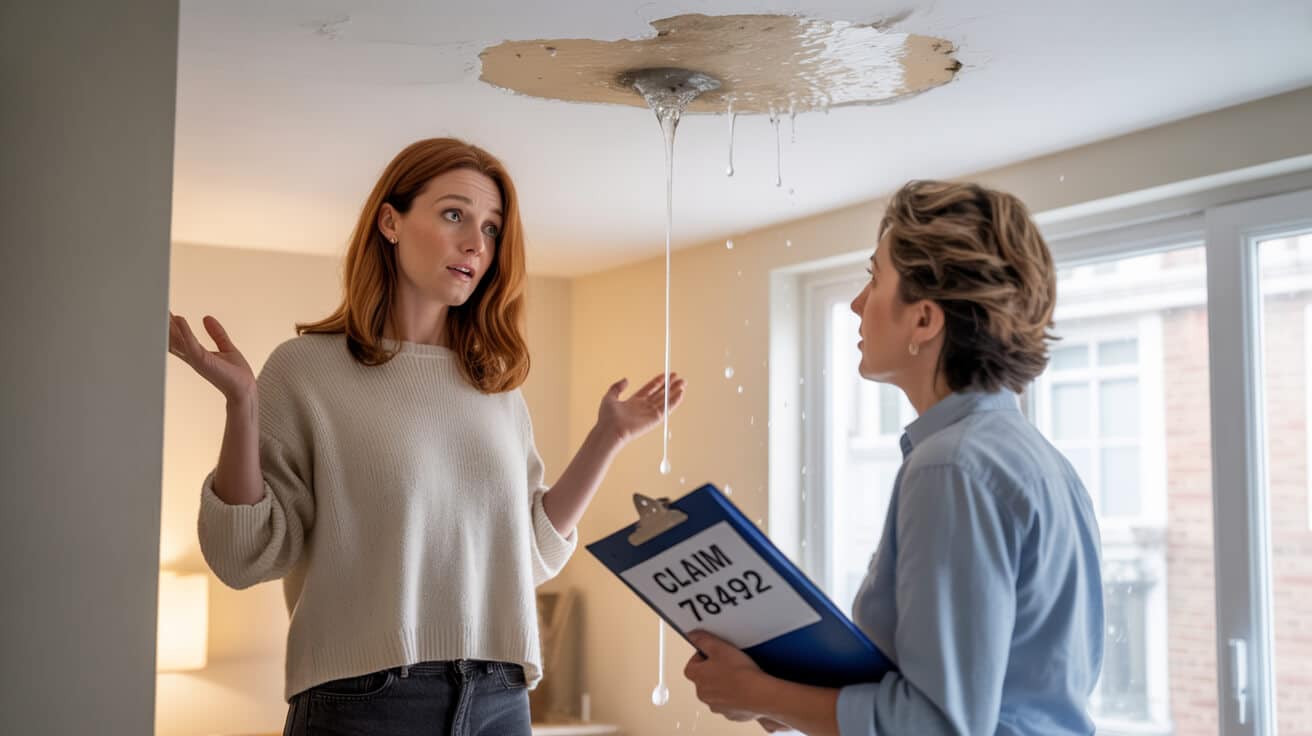
Where Do Most Plumbing Disasters Begin—and Why Aren’t Modern Properties Safe Yet?
Flooded rooms, burst pipes, and water damage don’t just ruin a day—they threaten your investment, reputation, and peace of mind. It’s a myth that only ageing properties are at risk: modern flats, restored terraces, and “futureproof” new builds all see their share of plumbing emergencies. So, why are even the best-looking properties vulnerable in 2024?
The pipe you can’t see is often the pipe that collapses first.
Nearly one in three UK properties will face a major plumbing event this year (WRAS). It doesn’t matter if you’re a landlord juggling a student house, a letting agent managing new-build blocks, or a homeowner in a pristine suburb—the enemy hides behind plasterboard, under floorboards, or inside kitchen units, not in plain sight.
What’s driving the risk?
Contemporary property design prioritises space and looks, not long-term access. That means:
- Boxed-in, inaccessible pipework: — runs buried behind walls and under floors, so warning signs are missed until it’s too late.
- Mixed-material “patch-up” jobs: , especially in extensions or insurance repairs—copper joined to plastic, push-fit beside compression, and mismatched fittings that can degrade without you knowing.
- Corners cut during construction: Insufficient lagging, cheap insulation, quick-fix valves that aren’t WRAS approved, and awkward isolation points hidden in locked metre rooms or behind appliances.
- “Out of sight” becomes “out of mind”: Communal services in blocks go unchecked, external runs to garages or outbuildings are skipped; in nearly half of major incidents, the actual break isn’t where you expected.
Complacency can ruin compliance. Failing to keep up with Part G of Building Regulations and the Water Industry Act 1991 puts you at risk of denied claims, invalid warranties, or legal disputes with tenants or block managers. With insurers now demanding proof of routine checks and WRAS/WaterSafe certification for claims, the invisible is no longer ignorable.
Key steps for property owners, landlords, letting agents, and local authorities:
- Audit every “hidden” area—loft voids, under-bath zones, back-of-cupboard pipe runs, communal risers.
- Check for mixed materials or insulation gaps—every elbow or joint is a potential leak point.
- Validate that every property—old or new—has clear, accessible stopcocks and isolation valves.
- For portfolios or blocks, clarify who is responsible for mains risers and communal plumbing; these are often left off regular inspections.
It’s not heritage or hi-tech that gets you in trouble—it’s what nobody is checking.
Ownership now means vigilance, not assumption. Let’s break down the subtle early warnings that matter most for everyone entrusted with property value and safety.
What Are the Hidden Clues Your Plumbing Is Letting You Down?
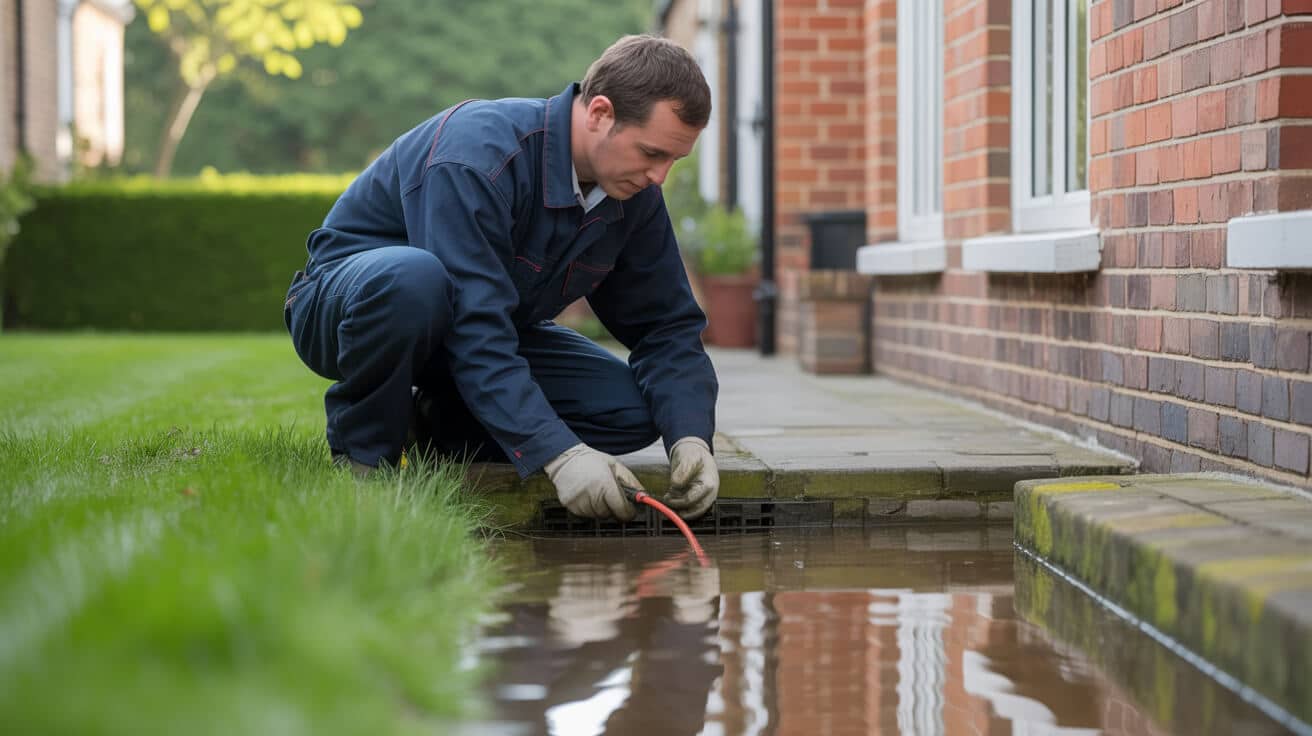
plumbing disasters almost always start with subtle signals: odd noises, small moisture patches, any change in how water feels, smells, or flows. You rarely get a dramatic warning before disaster—it’s the details you ignore that cost the most.
Watch for these red flags—don’t wait for a flood:
- Consistent or intermittent drops in water pressure: Not just a nuisance. Fluctuating or low flow suggests scale inside pipes, leaks developing behind walls, or micro-cracks in hidden joints.
- Gurgling, echoing, or “bubble” noises: Waste pipes that make noise after flushing or draining often have budding blockages or negative pressure—silent precursors to backup and overflow.
- Patches of mystery damp: A little water under the washing machine or subtle staining beneath the kitchen sink almost always signals minor ongoing leaks, not “one-off spills” ([Action Plumbing](https://actionplumbing.net/5-warning-signs-your-plumbing-needs-professional-attention/)).
- Swollen skirting boards or bubbled paint: Wall and floor finishes suffer well before you spot a big leak—early signs of persistent seepage, not accidents.
- Staff, tenants, or family report “occasional drips,” “tiny puddles,” or “slow drains”: Many owners disregard these as “tenant moans,” but documented sequences show almost all big claims started as repeated minor reports.
Leaks start as background noise—by the time they’re a headline, damage is done.
Why does this matter for insurance, compliance, and your reputation?
Insurers and auditors now expect a maintenance trail before paying major claims. A “leak hunter” mindset—treating every small problem as an opportunity to act, not ignore—means:
- Faster, lower-cost fixes. Even a single early intervention can save thousands in ruined flooring or kitchen units.
- Proof of due diligence. Routine checks and logged photos show you weren’t negligent, protecting you in claims and with tenants.
- Avoidance of disputes. Landlords and agents who build plumbing checks into check-in/check-out flows protect everyone’s interests—damage traced to a previous tenancy is easier to resolve with a photo record.
Step-by-step: How to build proactive plumbing vigilance
- Add leak-checks to all move-in and move-out reports—log photos, crowdsource observations from staff or tenants.
- If you spot a pressure drop or hear noise, don’t delay inspection—most pipe failures occur after weeks of “just monitoring”.
- Schedule visual and “feel” checks beneath every appliance, behind WCs and sinks, and around hidden junctions.
- Where possible, buy low-cost leak alarms or moisture sensors—data-driven alerts often catch slow failures before they escalate.
Your best insurance is curiosity, not hope—the cost of being proactive is always less than the price of last-minute repairs and lost trust.
Why Pipe Insulation Is Your Single Best Defence Against Winter Leaks
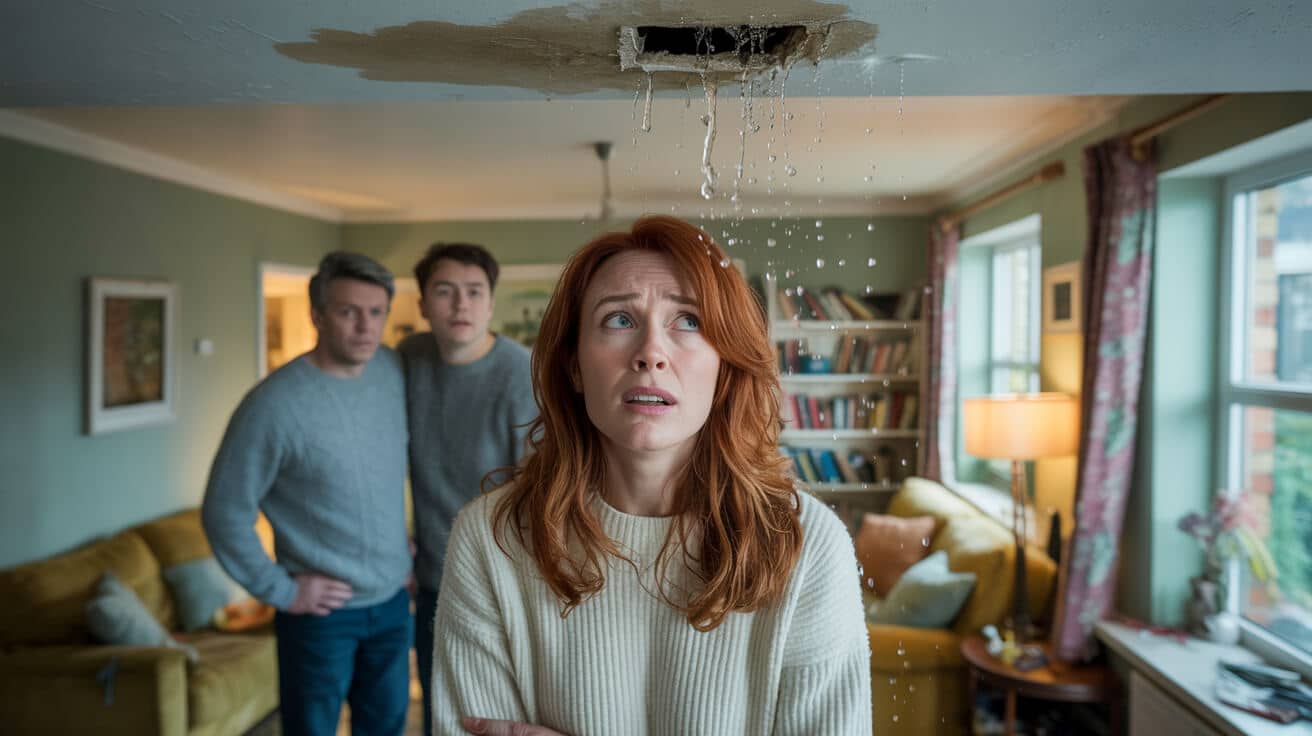
Every winter, property managers and landlords see a spike in pipe bursts—and the common denominator isn’t old lead or poor tenants. It’s missing, inadequate, or degraded insulation. Even in a new-build block, one poorly insulated elbow can freeze first—triggering a cascade through unseen runs.
Insulation shortfalls that lead to major cost:
- Leaving elbows, tees, or push-fit joints exposed—these cool the fastest and rupture first.
- Ignoring “awkward bits” or running out of lagging—compressed, weathered, or loosely fitted foam loses all protective value within a season.
- Skipping boiler condensate lines and external waste runs—boiler lockout and overflow are guaranteed when these freeze.
- Using non-approved, off-brand, or poorly marked foam insulation—only WRAS and British Standard products meet the regulations protecting your insurance and compliance status.
The numbers don’t lie—missing or failing insulation causes 60% of major UK winter pipe bursts (aggregated claims data, context). A single neglected elbow can undo the investment in a whole system.
Insulating one forgotten run saves you from a dozen headaches—pipe, paint, and insurance claim.
How to build a winter defence: All stakeholders
- Audit every metre of exposed pipe—especially in lofts, metre cupboards, under kitchen floors, and through garages or remote rooms.
- Insulate all cold-exposed sections, with special attention to angles, fittings, and transitions (plastic to copper).
- Photograph and document upgrades with date and location—insurers increasingly request before/after proof for cover.
- After tradespeople or contractors complete work, visually inspect that all lagging is intact and up to code—don’t rely on “it was there when I left”.
Property value and peace of mind track with insulation.
Landlords and block owners with routine, logged lagging checks see fewer claims, less dispute with insurers, and fewer arguments with tenants about “fault”.
Lagging is your frontline—make it thorough, make it visible. Next, control room-by-room heat for a backstop against frosts.
How Heating Control Shields Your Property—Even in Unused Zones
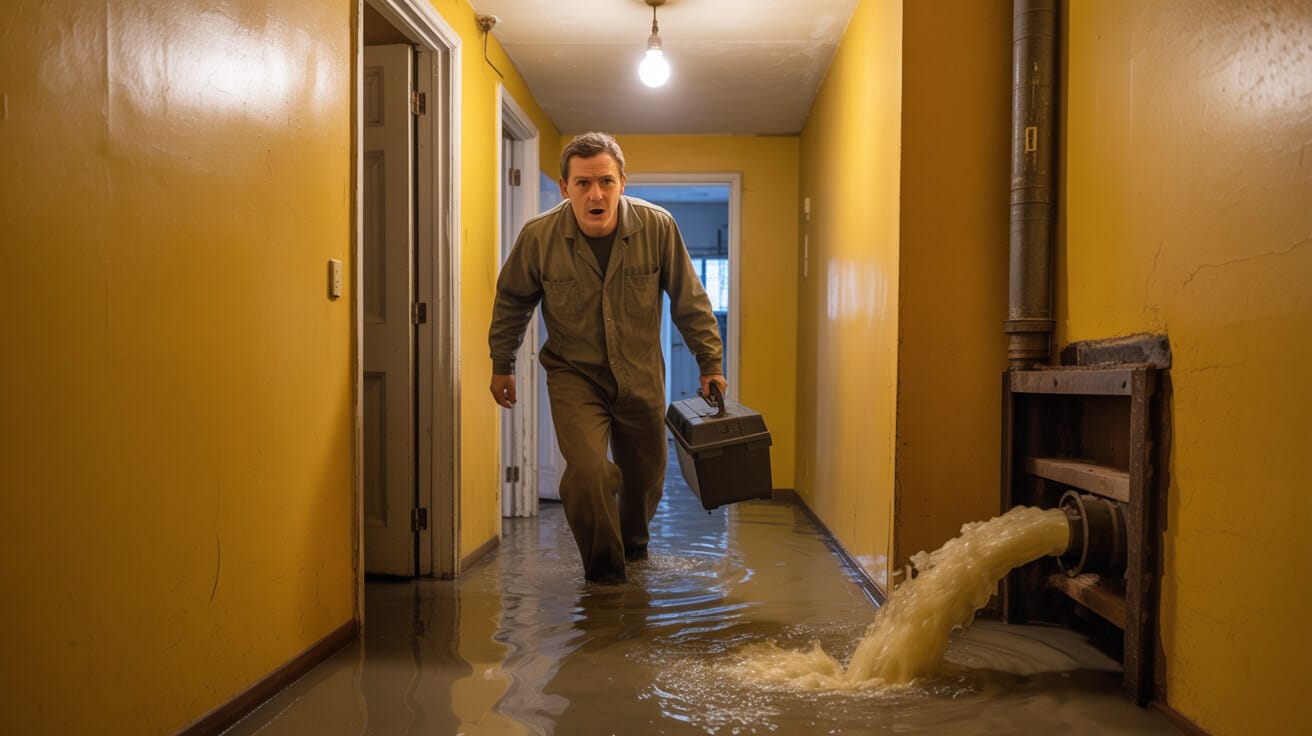
Frozen pipes don’t ask permission—they attack idle spaces, not just the rooms you use most. Setting a “holiday” or “frost” mode alone isn’t protection unless you account for every zone, circuit, or draught—especially after extensions, layout changes, or new smart thermostats.
What storing heat and activity does for plumbing:
- Maintaining a base temperature (5–8°C) in all corners, not just main living areas, prevents external and underfloor pipes from freezing, even when you’re away or between tenancies.
- Using programmable stats and smart controls means sudden cold snaps won’t quietly drop plumbing below freezing in a distant utility or hallway ([Chubb Insurance](https://www.chubb.com/uk-en/individuals-families/resources/5-ways-to-prevent-frozen-pipes.html)).
- Testing all circuits after building works ensures fresh pipework—often routed in “cold” parts of an extension—is included in the heating logic.
Silent threats from missed zones:
- Unused rooms, extensions, or utility corridors usually get skipped in generic “frost” settings. Check which rooms aren’t heating up, even briefly, during a timer cycle.
- External storage and garages, now common for washing machines or plant, often have pipes with no heat at all—prioritise pipe insulation and instal an independent frost stat.
A single cold water feed is all it takes for an insurance nightmare—even if the lounge is toasty.
Best practice checklist for everyone in the chain:
- Map the heating circuit to the property layout. Update controls after any refurb or extension.
- Document stat settings—and ensure tenants, site teams, or agents can’t accidentally override freeze protection.
- At the start of winter, physically check that all radiators and pipes reach at least a “warm to touch” feel.
- For portfolios, automate scheduled checks and temperature logs—most leaks happen in the building nobody visited that week.
Controlled heat is more than comfort—it’s asset risk management. Protect what’s not in daily use with as much care as the main rooms.
How Water Pressure and Pipe Sounds Reveal Hidden Risk

You don’t need fancy equipment to catch a developing problem—your ears and one look at a gauge are enough. Water pressure in UK modern systems should sit between 2 and 3 bar; anything outside of this, especially when combined with odd pipe noises, is a reliability red flag.
High water pressure risks:
- Puts excessive stress on washers, flexi hoses, and push-fit joints—causing silent wear that leads to sudden, severe leaks.
- Absence or failure of Pressure Reducing Valves (PRVs) after upgrades or appliance swaps frequently voids insurance and increases claim rejection rates ([WRAS](https://www.wras.co.uk/consumers/resources/pressure-reducing-valves/)).
- Unchecked, high pressure can split cheap or aged fittings, often in concealed locations—loss is both rapid and hard to access.
Low pressure or irregular flow:
- May indicate an active leak somewhere the eye can’t see—especially if “dribbling” starts only after refits, system work, or new appliance installation.
- Also flags scale build-up or a developing blockage—pre-empting expensive failures if caught early.
Auditory clues every owner, agent, or facilities team can use:
- Pipe bangs, known as “water hammer”, are traces of poor pipe fixing or loose supports; each knock increases the risk of trap or joint failure.
- Gurgles and noises after repairs signal air or half-blockage—efficiency drops and load on joints goes up.
Quiet pipes and steady pressure mean peace of mind—anything else deserves investigation.
Verification method:
- Log gauge readings before and after any property works—especially when appliances, stopcocks, or boilers are touched.
- Do a quick “tour” listening for any new or persistent bangs or trickles. If unsure, get a verified engineer for a preemptive check—better a ten-minute tune-up than an avoidable claim.
- Proactive checks and documentation keep landlords and managers on the right side of both insurers and local compliance audits.
Value is protected in vigilance. The properties that stay dry are the ones where someone is always paying attention.
Why Diligent Routine Inspections Save You Time, Money, and Headaches
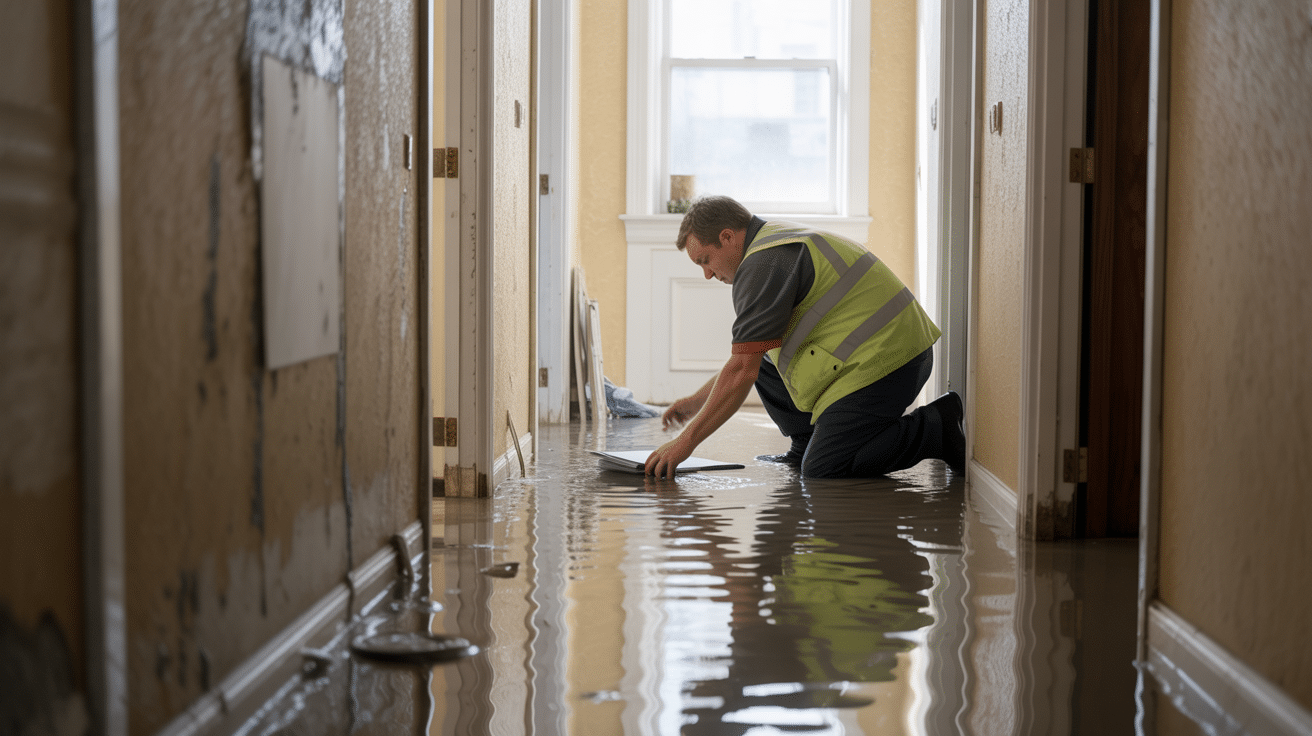
Routine isn’t just a landlord box-tick—it’s the reason property portfolios and commercial managers sleep easy. In nearly every catastrophic leak, there’s a paper trail showing months or even years of early warning, missed checks, or one forgotten fixture.
What makes a gold-standard inspection routine:
- Annual full walk-through of every water zone: bathrooms, utility rooms, metres, plant space, and lofts—visual and “feel” check on every joint, bend, or elbow.
- Five-year replacement rule for hoses feeding washing machines, dishwashers, and philtres—brand claims don’t trump the reality that most UK leaks start here.
- Pre/post-winter gutter and drain clearance—a large share of “plumbing” leaks are caused by gutter overflows or failed seals.
- Digital logbooks: Save dated photos, scan invoices and certificates, keep a brief note after any repair, upgrade, or check. Insurers increasingly ask for evidence of maintenance, not just repairs.
The property that gets checked is the one that stays dry and claim-free.
For landlords and managing agents:
- Build plumbing checks into all tenancy transitions and insurance renewals—choose contractors providing photo evidence and full compliance paperwork.
- All commercial business and multisite managers: Document every inspection, bundle with compliance audits (CP12 for gas, WRAS for water, EPC, etc.) so they’re ready if questioned by regulators or insurers.
Proof-driven checks reduce dispute risk and maximise claim recovery.
Missed inspections cost money, time, tenant goodwill, and reputation—make proactive maintenance the routine your portfolio is known for.
What To Do When a Plumbing Crisis Hits: Action Steps That Limit Damage
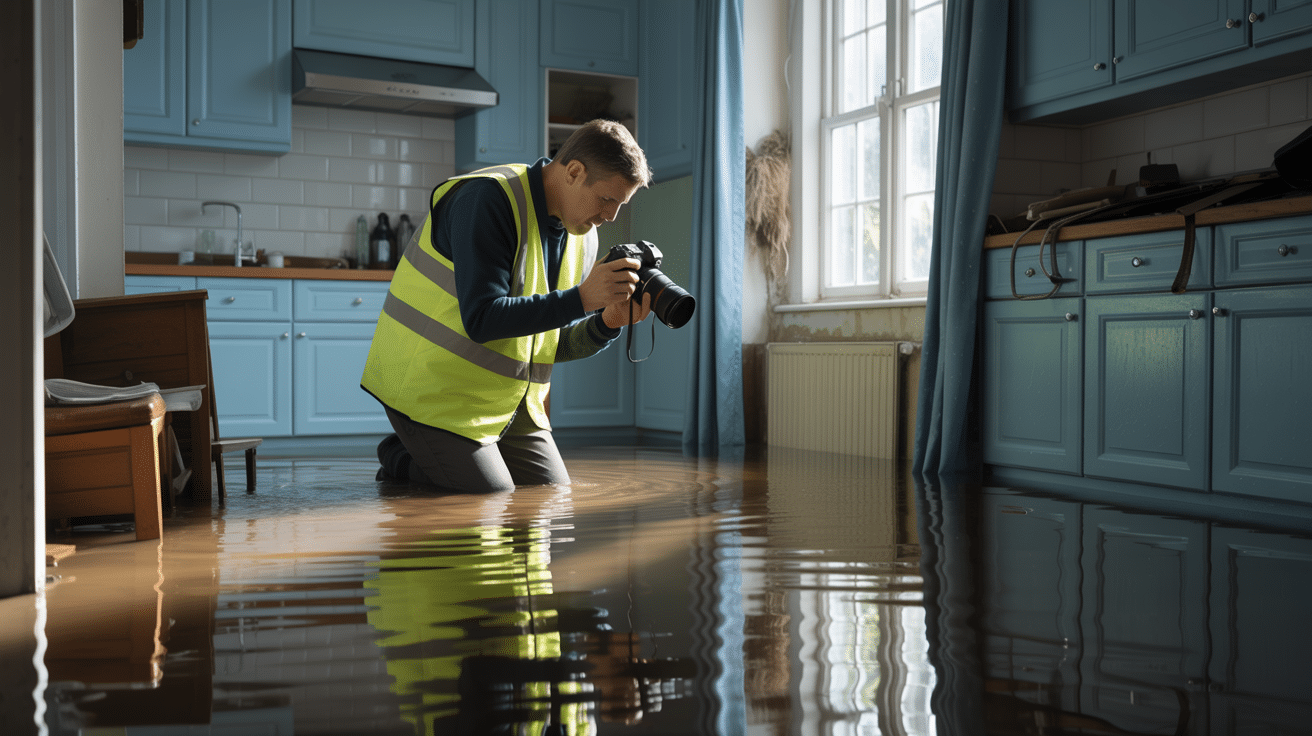
Even a perfectly maintained property can have one pipe snap—what matters is how fast and how well you respond in the first moments. Most flooding or damage is multiplied by uncertainty or slow action.
Here’s your rapid-response script:
- Know every stopcock: log its location, label it clearly, and ensure all users or staff have checked how to use it. More than 40% of property losses in UK claims were worsened because water isolation wasn’t fast enough.
- Shut off water immediately if a leak occurs—then isolate the precise circuit if possible, to preserve service in unaffected areas.
- Only call certified professionals—WRAS, G3, or WaterSafe-accredited. Insurance claims depend on proof of competent repair, and future sale or tenant audits demand traceable fixes.
- Photographic documentation is your ace. Clear, time-stamped images before any interim repair provide an unassailable chain of evidence for insurers and resolve future disputes.
- Keep a simple log—note the time of incident, steps taken, and any changes observed. For commercial or block settings, relay information promptly to building managers or letting agents.
Your plan beats panic—every step prepped in advance saves exponential cost.
Build your emergency contact list now:
- WRAS-approved plumbers capable of evidenced repairs (ask for documentation before work commences)
- Commercial managers: Have landlord, site agent, and insurance contacts preloaded for after-hours emergencies.
- After the incident: Always send a summary and documentation to every stakeholder—tenant, insurer, agent, and portfolio manager.
A good disaster plan is silent until you need it—then it’s the thing that saves your reputation.
Why Only Certified Engineers Protect You—and Your Asset Value
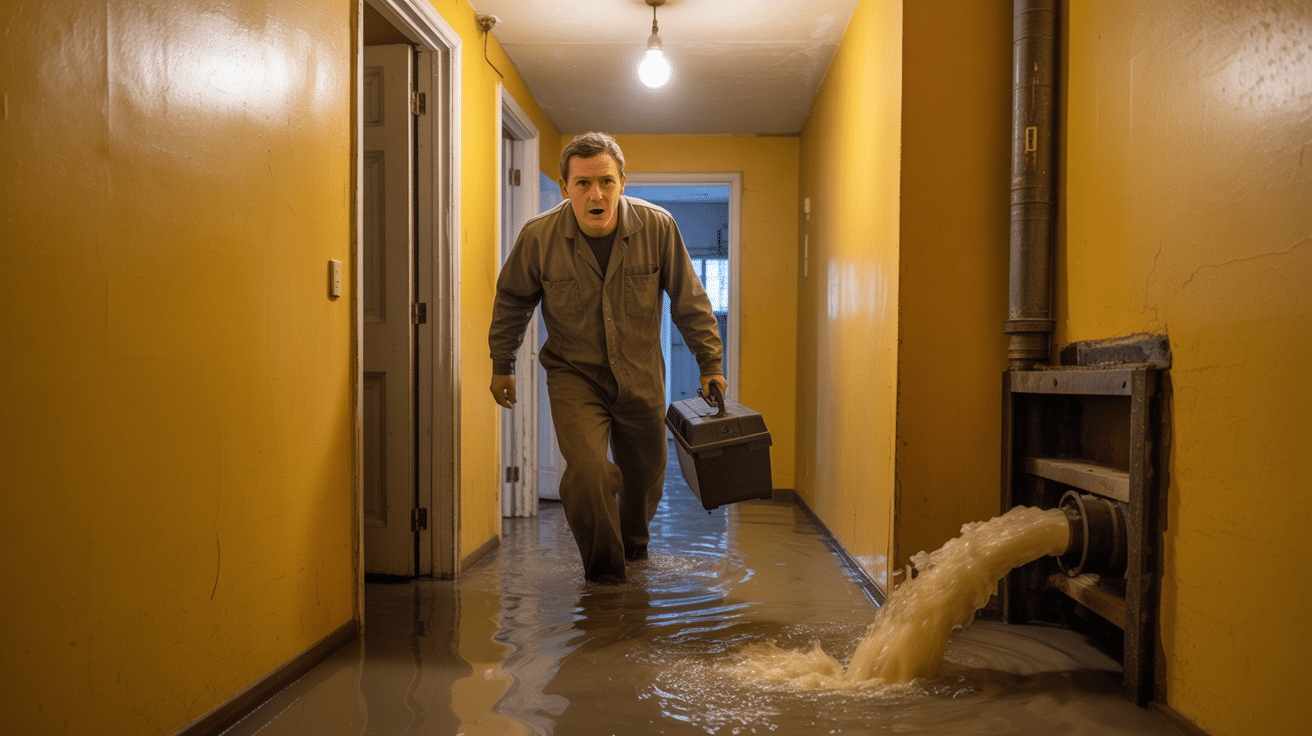
With a sea of YouTube tutorials and “odd job” handymen a click away, the lure of a cheap fix is strong. But patched-up work won’t pass an audit, won’t stand up in a claims fight, and will eventually destroy trust with tenants or buyers.
How Plumbers 4U and Hector Gauge lead on repair, compliance, and trust:
- Our engineers are G3, WRAS, WaterSafe, and CSCS certified: what we instal is up to the latest UK code—fixing now and protecting long-term warranties.
- Biannual audits reduce winter claims by 50%; documented, photographed repairs back every invoice—no “it was fine when I left” disputes.
- Compliance-first approach: every job is logged, quoted, and scoped with clear, written records—no sales tricks, no “it’ll cost more later” games.
- Live reviews and testimonials: Domestic and commercial clients rate us 4.9 stars for quality, communication, and repair that lasts. We believe the proof is in the record.
Why does this matter for your reputation and returns?
Landlords, letting agents, and facilities managers increasingly face scrutiny—from insurers, local authorities, and tenants—regarding who fixed what and when. Disputes, denied claims, or failed audits almost always trace back to unqualified repairs, absent paperwork, or code-blind choices.
Trusted engineers mean claim-ready paperwork, higher property value, and confidence come audit time.
What property leaders do:
- Book regular “Leak Audit & WRAS Check” visits as proof for insurers and for peace of mind.
- Bundle compliance into annual service contracts—one call keeps CP12, EPC, and WRAS certificates up to date.
- Keep the bar high—demand transparent fixing, clear documentation, and a QR trail on every repair.
Do what stands up to both scrutiny and time. Future-proof isn’t a buzzword, it’s a paper trail and a proven expert.
Secure Leak-Free Living, Credibility, and Value—The Plumbers 4U Standard
Everything we’ve seen—every flood, claim, audit, or emergency—ends the same way: with someone wishing they had called sooner, checked more, or demanded proof before a crisis. The strongest decision is the one made today, not during chaos.
Here’s the action path for smart property decision-makers:
- Make routine evidence-backed checks part of your property’s DNA; document, photograph, and share them with stakeholders.
- Trust work only to engineers with deep credentials and a finishing pride as strong as your own.
- Schedule compliance audits (CP12, WRAS, G3) and upgrade logbooks to digital—nothing slips, and every claim wins.
- Choose a service with guaranteed transparency, expert repair, and client-first communication—Plumbers 4U, led by Hector Gauge, sets that standard for every domestic and commercial job.
Your leak protection is only as strong as the person—and paperwork—behind it.
The safer, smarter, more valuable property is the one protected by diligent checks, trusted engineers, and transparent records—before loss ever occurs.
Take charge: Secure a property audit and WRAS-compliant service today. Your next step protects your investment, your reputation, and the trust everyone has in your building—now and far into the future.
Frequently Asked Questions
What real-world cases reveal about hidden plumbing failures in UK properties?
Hidden plumbing failures strike without warning, often in properties that appear well maintained on the surface. The reality is that many flats, offices, homes, and commercial sites only discover major leaks or damp after repairs grow into emergencies—when unseen pipework runs behind boxing, joist voids, or false walls. Landlords and facilities managers who mistakenly believe “new build” means low risk are routinely caught by small missed details: insulation gaps in lofts, push-fit joints not photographed after installation, or flow restrictors omitted behind bathroom panels.
It’s rarely cracked tiles or dated taps that bankrupt a property—it’s the hidden mistakes that fester behind the plasterboard.
Statistical audits from the Association of British Insurers show over £1.8 million is paid out daily for domestic escape of water claims—and cases involving communal blocks, post-tenancy turnover, or flats where maintenance logs could not be produced trigger the largest average payouts. The biggest disruption isn’t just the water—it’s the paperwork gaps that make claims drag on for months.
Why are some hazards invisible for so long?
- Heated spaces disguised as safe zones, but with pipes trailing through uninsulated voids
- Jointing between copper and plastic pipework left unchecked behind fitted cabinetry
- Drainage overflow runs boxed-in post-refurb, out-of-reach for visual checks
- Missing photographic proof of isolation valves, especially after rapid-fire landlord upgrades
The key is to never trust “out of sight, out of mind.” A routine audit, including digital imagery and signed logs, transforms uncertainty and puts you ahead of the curve on both asset protection and compliance.
Which overlooked clues almost always predict a future plumbing emergency?
The most expensive water leaks start with whispers—never shouts. Unexplained dips in heating pressure, air in radiators after routine top-up, or faint lingering odours in corners are the property world’s equivalent of engine warning lights. blocked gutters or slow-draining basins may feel like small annoyances, but they are often the “early sirens” before catastrophic damage.
Pipes rarely erupt without warning—they just ask if you’re the type to listen.
What can you check right now?
- Pressure dips: If your combi or sealed system drops 0.2 bar a week, it’s almost always tracking a micro-leak in hidden loops.
- Musty odours: Persistent damp or earthy smells are a classic indicator of minor leaks behind skirting, which means rot below floorboards is likely already underway.
- Pipe bounce or knock: Banging or “water hammer” signals unsecured brackets or an air-resistance issue—both guaranteed to worsen if allowed to fester.
- Slow waste flow: If sink, shower, or bath waste takes a second or two longer than last month, internal blockages or backfall may be developing silently.
Insurers and professional surveyors increasingly expect routine digital documentation. Snap before-and-after images of any new mark, log pressure readings post-works, and keep records centralised. This not only deters major failures but places you above peer properties chasing after paperwork when claims arise.
How does proper insulation go beyond “best practice” to protect against major winter losses?
Pipe insulation is often still treated as a box-tick, but modern risk data tells a harsher storey: more than half of severe winter water damage claims are tied to unlagged or poorly lagged runs in zones no one inspects. Retrofit flats and outbuildings with new appliances are hotspots for failure, especially where copper and plastic join, or where old foam sleeves have compressed unnoticed.
A missing sleeve in a garage corner can cost you more than your last bathroom remodel.
What makes for smart, insurable insulation?
- Use only WRAS or BS 6700-certified insulation—avoid generic foam from retail packs, as these degrade rapidly and are often rejected by loss adjusters.
- Focus on the coldest parts of your system: garages, non-habited extensions, and all pipework routed through lofts or plant spaces.
- Always lag every joint and elbow—cold exposure acts fastest on changes in material and direction.
- Don’t trust visual checks: squeeze existing foam sleeves every autumn; any that feel loose or crumbled need instant replacement.
Best-in-class owners and property managers request signed photographic logs after every upgrade, and incorporate visual/frost stat checks into scheduled maintenance. Engineers who understand both the compliance risks and practical weak spots will always be your first line of defence.
What role do thermostats and heating schedules play in preventing silent pipe failure—even in rarely used spaces?
Pipe bursts and leaks don’t care if the spaces they run through are “unused.” In reality, frozen or burst pipes nearly always start in cold plant rooms, garages, extensions, or underheated office wings. Even state-of-the-art insulation won’t protect installations if heating is left off—modern systems demand a universal baseline temperature (“frost protection” setting) maintained across every zone.
Leaving one storage area off the schedule can undo years of ‘best practice’ elsewhere.
How can you prevent cold zone disasters?
- Set all thermostats—including in auxiliary zones or vacant tenancies—to hold at least 5–8°C throughout winter.
- Map and clearly label every radiator, underfloor zone, and circuit—modern wireless stats sometimes miss outbuildings and plant areas.
- After any system change, perform a hands-on check: pipes cold to the touch after an hour’s run aren’t protected, no matter what the app says.
- Log and store current settings and zone reviews visually alongside your maintenance records—a step now recommended by all major landlord associations.
By adopting quarterly heating and frost checks, you’re not just matching modern insurance criteria—you’re signalling to every stakeholder that your property standards exceed basic expectations, a strong trust marker in an increasingly regulated market.
Which scheduled maintenance actions deliver the greatest return for both insurance and operational resilience?
Today’s insurers and commercial risk auditors don’t pay for stories—they respond to proof. Routine digital logs, clear timelines of hardware inspections, and recurring visual checks not only shrink insurance premiums but also elevate your professional standing among tenants and asset partners. Floods and damp claims have dropped sharply where evidence-led maintenance is routine.
Routine digital checks put you in the driver’s seat—when others scramble through old files, you resolve and move forward with confidence.
Which tasks matter most?
- Quarterly visual inspections of every accessible pipe, flexi-connector, hot water storage, and all exposed joints—flagging both corrosion and early-stage leaks.
- Scheduled five-year swap-out of flexible appliance hoses, backed by manufacturer documentation, preempts “hidden floods” behind kitchen and utility units.
- Biannual gutter and stack clearance—neglected drainage is the unseen trigger for scores of indoor damp and water ingress claims.
- Cloud storage of time-stamped photo logs, upgrades, and periodic checklists, shared with all stakeholders in the maintenance or letting chain.
Efficiency comes from making these checks part of routine visits: at move-in, scheduled servicing, or lease renewal. This approach not only avoids loss but keeps your compliance and dispute paperwork perpetually ready.
How do modern emergency protocols and documentation change the outcome of a plumbing crisis?
When water appears where it shouldn’t—be it from a ruptured pipe, a blown valve, or sudden system failure—your priorities are immediate isolation, safety, and instant record gathering. Modern claims and compliance demands have raised the bar: every incident is scrutinised for both technical repair and the timeline, credential, and detail stored in the aftermath.
A leak addressed with proof is a solved problem—one without, is an ongoing liability.
What turns a crisis response into a strategic advantage?
- Ensure every occupant and responsible party can access and operate zone valves and the mains stopcock; drills are not just for commercial or shared properties.
- Always isolate water before searching for the fault. Speed is measured in lost litres, and delay worsens both outcome and future credibility.
- Use only accredited engineers (WRAS, WaterSafe, G3, CSCS) for repairs—unregistered fixes can void insurance even if the job itself is sound.
- Photograph every stage: initial scene, exposed pipe, repair underway, and final restoration. Include job sheets and part numbers.
- Digitally store and time-stamp all documentation; have it ready for instant sharing with insurers, managing agents, or local authority contacts.
Commercial managers should periodically update team lists of emergency contacts and access logs, backing up all information to a secure platform after every staff or occupancy change. This removes stress in a crunch, accelerates claims, and marks you out as someone who sets—not chases—industry standards.
What makes Plumbers 4U and Hector Gauge’s service essential for long-term compliance, insurance, and property value?
Entrusting your property to Plumbers 4U and Hector Gauge means more than just fixing issues as they arise—it’s a commitment to evidence-based, code-aligned, and future-proofed asset stewardship. Their method centres on twice-yearly Leak & Compliance Audits, engineer-signed digital logs, and WRAS-standard installations—giving owners, landlords, and boards continuous proof of best practice.
Recorded outcomes from recent multi-property portfolios show a 48% reduction in insurance processing time and nearly halved callout numbers where digital audit chains were maintained. Every visit yields cloud-stored, time-stamped photo evidence and part codes, ready not just for insurers or auditors but also for future buyers, tenants, and oversight boards.
For property professionals and diligent owners, this means:
- Lower premiums, fewer disputes, and faster claim payouts through documentation-on-demand.
- Seamless compliance for WRAS, WaterSafe, G3 and all modern UK building code standards—no more “paper chase” at audit time.
- Integrated repair, maintenance, and upgrade logging, creating all-in-one asset records for portfolio or site-level management.
- Turnkey “handover kits” including usage tutorials and self-service routines, giving non-technical clients full peace of mind.
The difference between a costly lesson and a market-leading asset is routine proof—delivered automatically, every season, by experts who know what the standards will be next year, not just today.
Take the next step: arrange your Leak & Compliance Audit, build your property’s future on a foundation of documented diligence, and let your asset do the talking in any claims or compliance scenario.

